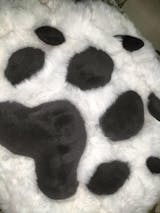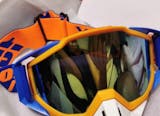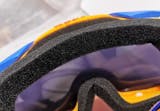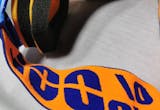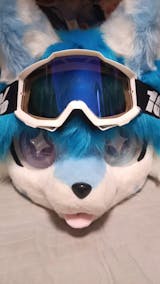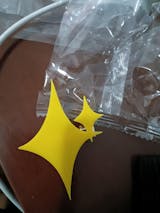Creating your own fursuit paws is one of the most rewarding DIY projects for fursuit enthusiasts. Whether you’re building a full suit or simply adding custom accessories to your cosplay, learning how to make fursuit paws offers creative freedom and a deeper connection to your character. At MeowFursuits, we understand the value of craftsmanship, and we’re here to walk you through the entire process—from choosing materials to sewing your final stitches.

In this in-depth tutorial, we’ll cover everything you need to know about DIY fursuit paws, including fursuit paws patterns, materials, construction techniques, and finishing touches. This guide is perfect for beginners or anyone curious about building their own fursuit parts with confidence and care.
Why Make Your Own Fursuit Paws?
Handmaking your own paws offers full creative control—choose the color, fabric, shape, and size that best express your fursona. DIY fursuit paws can also be more cost-effective than commissioning, and they offer a valuable entry point for beginners learning the art of fursuit creation.
Whether you're a first-time maker or an experienced crafter looking to refine your skills, this tutorial covers the essentials using tried-and-true fursuit paws patterns and tips sourced from years of experience at MeowFursuits.
Tools and Materials You’ll Need
Before diving into the sewing and shaping, it’s essential to gather all the necessary tools and materials. Having everything ready in advance will help your DIY fursuit paws project go smoothly and allow you to focus on crafting, not scrambling for supplies.
Materials:
- Faux Fur (½ to 1 yard): Choose high-quality faux fur with a dense pile and sturdy backing. The exact amount depends on the size and style of your paws—puffy or oversized designs may need more.
- Lining Fabric: Soft fabrics like lycra, fleece, or jersey knit are ideal for the inner layer of the paws. They improve comfort, breathability, and durability.
- Stuffing: Poly-fil is the most common choice for filling the paw fingers to give them that plush, toony look. Upholstery foam can also be used if you prefer a more structured shape.
- Claws: You can use pre-made plastic safety claws, resin options, or craft your own from fabric or foam. These add character and definition to the paw tips.
- Paw Pads: Typically made from minky, fleece, or vinyl. These are sewn or glued onto the palms and fingers to create the recognizable paw print shape.
- Matching Thread: Use thread that blends with your fur color to keep seams as invisible as possible.
- Optional – Armature Wire: For more advanced builds, inserting wire into the fingers can allow for poseability and structure.
Tools:
- Fabric Scissors: Sharp scissors specifically for fabric ensure clean cuts without damaging fur fibers. Avoid using regular paper scissors.
- Sewing Machine (Optional): Speeds up the process, especially for long seams, but not required. Hand stitching works well for most parts.
- Sewing Needles: Choose strong needles suitable for thick layers of fur and lining fabric. Using curved needles can make sewing in tight or awkward spots much easier.
- Hot Glue Gun and Glue Sticks: Used for attaching paw pads, claws, or securing internal elements. A low-temperature glue gun can help avoid burning or damaging delicate materials.
- Pins or Clips: These hold fabric pieces in place before sewing. Clips are especially helpful for fur, as they don’t leave holes.
- Chalk or Washable Marker: For tracing your fursuit paws pattern onto the back of the faux fur. Avoid ink pens or markers that might bleed through.
- Fursuit Paws Pattern: You can download printable templates online or hand-draw your own. Starting with a basic toony-style four-finger pattern is ideal for beginners.
At MeowFursuits, we always recommend laying out all materials and tools in an organized workspace before starting. This not only makes your build process more efficient but also helps avoid missing crucial components midway through your project.
Step 1: Choose or Design Your Fursuit Paws Pattern
Every successful fursuit paw build starts with a solid pattern. This template acts as your foundation, influencing not only the fit but also the overall shape and expression of the paws. Whether you’re aiming for rounded toony hands or something more defined and realistic, selecting or creating the right fursuit paws pattern is your first important decision.
Option 1: Start with a Pre-Made Pattern
If you’re new to DIY fursuit paws, we highly recommend using a pre-made pattern. These ready-to-print templates are available through various platforms like Etsy, Gumroad, and community forums dedicated to fursuit crafting. Look for patterns that are designed to print on standard A4 or Letter-size paper, and that include clear labels, seam guides, and step-by-step instructions.
At MeowFursuits, we’ve developed beginner-friendly printable fursuit paws patterns in multiple sizes. These templates come with built-in seam allowances, intuitive labeling, and clear indicators for things like claw placement and paw pad position—making it easier to avoid common errors such as uneven finger spacing or uncomfortable wrist fits.
Option 2: Design Your Own Pattern
If you want to create something fully custom, drawing your own fursuit paws pattern is a great way to tailor the design to your specific character or hand shape. Here’s an easy approach to create a basic toony-style pattern:
- Trace Your Hand: Place your hand on a large sheet of paper and spread your fingers slightly.
- Add Extra Space: Outline your hand, then draw a second line about 1 inch around the first to allow room for puffiness and seam allowance.
- Form the Fingers: Round off the finger outlines into smooth “bean” shapes to achieve the traditional toony paw look.
- Draw a Separate Thumb: Creating the thumb on a separate panel gives better flexibility and a more comfortable fit.
- Create Top and Bottom Templates: Design both the top (fur-facing) and bottom (paw pad-facing) layers individually.
- Mark Details: Add markers for where claws and paw pads should be placed to simplify sewing later.
Your Pattern Should Include:
- Top and Bottom Panels: These define the outer shape of the paw and determine how the finished piece will look from different angles.
- Divide the Fingers and Thumb Sections: This step is crucial for easier turning, stuffing, and better finger movement.
- Paw Pad Guides: Clearly marked positions help you sew pads symmetrically.
- Claw Placement Points: These ensure visual balance across both hands.
Tips for Pattern Handling:
- Always print at 100% scale to ensure accurate sizing.
- Test your pattern by wrapping the paper pieces around your hand to check proportion and fit.
- Label each section clearly, such as “Left Top Panel” or “Right Palm,” to stay organized.
- Consider tracing the final pattern onto sturdy cardstock or laminating it if you plan to reuse it in future projects.
Choosing the right pattern at the start saves time and prevents frustration later. Whether you opt for a downloadable template or create your own DIY fursuit paws pattern from scratch, take your time to get it right.
At MeowFursuits, we commonly suggest that beginners begin with a classic four-fingered toony paw style. It’s roomy, easy to sew, and gives that fun, oversized character look that’s ideal for learning the basics while still making something impressive.
Step 2: Trace and Cut Your Fabric
Now that you’ve selected or designed your fursuit paws pattern, it’s time to move on to the cutting stage. This step is all about precision—how well you trace and cut your materials directly affects the final look and comfort of your DIY fursuit paws. Beginners often underestimate how important fabric orientation and cutting technique are, especially when working with faux fur.
Lay Out the Fur Properly
Lay your faux fur flat on a spacious, clean surface with the fur side facing down and the backing side facing up. This makes it easier to trace and ensures you don’t accidentally cut or flatten the fur pile while working.
Take note of the fur direction (also called the "nap")—this refers to the way the fur naturally lies. For fursuit paws, the fur should flow from the wrist toward the fingertips to create a natural and appealing look when worn.
MeowFursuits Tip: Use your hand to gently brush the fur to identify the nap direction before placing your pattern pieces.
Trace the Pattern Pieces
Using chalk, tailor’s pencil, or a washable marker, carefully trace your fursuit paws pattern onto the backing of the fur. Make sure each piece is clearly labeled—for example, “Left Top,” “Right Bottom,” etc.—to avoid confusion during assembly.
Do the same with your lining fabric, such as fleece or lycra, and with the paw pad material (minky or vinyl). If your design includes separate fingers, claws, or other decorative details, trace those as well at this stage.
Important: Always mirror your pattern when cutting for left and right hands. The easiest way is to flip the paper pattern over when tracing for the opposite hand.
Cut Carefully for Clean Results
Cutting faux fur is very different from cutting regular fabric. If you cut through the pile, you’ll create jagged edges and visible seams. Instead, you want to cut only the backing layer of the fur.
Cutting Tips:
- Carefully cut along the traced lines on the backing using a sharp razor blade, X-Acto knife, or small pointed scissors.
- Keep the blade shallow—just deep enough to slice through the backing but not the fur fibers.
- Gently pull the fur pieces apart after cutting; use your fingers to free any loose strands caught in the seams.
Once you’ve cut your fur pieces, gently shake or brush them to remove loose strands and fluff up the edges. You’ll notice a cleaner finish and fewer messy seams later.
Repeat the process for your lining fabric and paw pad pieces, which can be cut with regular fabric scissors since they don’t have a fur pile to preserve.
Step 3: Attach the Paw Pads and Claws
Adding paw pads and claws is a key step in defining the look and personality of your DIY fursuit paws. This stage brings out the expressive, creature-like qualities that make your design stand out, whether you’re going for a cute, cartoon-inspired style or something more naturalistic.
Paw Pads:
- Position: Start by securely pinning or clipping the paw pads onto the palm and fingertip fabric pieces. Ensure each pad aligns precisely with the placement marks on your pattern to maintain symmetry and balance. Proper positioning at this stage will help maintain a professional, polished appearance in the final product.
- Sew: Using either a zig-zag stitch or a straight stitch, sew each pad securely in place. A zig-zag stitch is especially recommended if you are using stretchy materials like minky or fleece, as it provides greater flexibility and holds better over time. Take your time sewing around curved edges to maintain even stitching and avoid puckering.
Claws:
- Placement: Use chalk or a washable marker to clearly mark each claw position on the fur fingertips, following the indicators on your fursuit paws pattern. Accurate placement ensures your claws are aligned and appear balanced across each hand.
- Attach: If using plastic safety claws, insert them directly into the seam allowance between the top and bottom fur layers, pointing outward. As you sew the seams closed, the claws will be securely anchored within the structure of the paw. For fabric or foam claws, apply a small amount of glue and press them into the seam line before stitching or closing. Always ensure that claws are angled consistently for a cohesive final look.
This stage adds visual impact and character to your paws, enhancing their tactile and expressive quality. Clean attachment of paw pads and claws is what turns a basic costume glove into a believable and engaging piece of your fursona.
Step 4: Construct the Outer Shell
Start constructing the outer layer of the paws by sewing and shaping them with precision. This step forms the basic paw structure, preparing it for stuffing and finishing.
-
Sew Fingers:
With the fur sides facing each other (inside out), carefully stitch around each finger shape, including the thumb. Take your time to sew smoothly along curves to avoid puckering. Keep the wrist end of each finger unsewn to allow for turning the fabric right-side out and adding stuffing afterward. -
Join Palm and Back:
Carefully position the top (back) and bottom (palm) pieces of the hand, ensuring all seams and curves align accurately. Pin or clip the pieces securely before sewing to maintain accurate alignment. Sew along the edges, ensuring strong, even seams around curved areas such as the thumb base and finger joins. -
Flip Right Side Out:
Gently turn the entire paw shell right-side out through the open wrist end. Use a blunt tool, like a chopstick or the eraser end of a pencil, to carefully push out each finger tip, shaping them into smooth, rounded forms without damaging the fabric or seams.
At this point, your fursuit paws will start to take clear shape, resembling the hand structure of your character. This stage sets the foundation for stuffing and final adjustments, so accuracy and patience here will pay off in the finished product.
Step 5: Add Stuffing (Optional)
Adding stuffing to your fursuit paws can significantly affect their overall look, feel, and functionality. Depending on the style you want to achieve and the level of mobility you need, stuffing can provide structure or maintain flexibility. Here’s a detailed look at your options when you decide how to make fursuit paws with or without stuffing.
- Using Polyfill for a Plush, Soft Look: Lightweight and soft, polyfill gives a plush, rounded look. Fill the fingers lightly to maintain flexibility, as too much stuffing can restrict their movement.
- Use foam for a more rigid, cartoony appearance: For a firmer, more cartoony shape, foam provides structure and helps fingers keep their form. It’s less flexible but great for expressive paws.
- Skip stuffing for a more natural, flexible feel: Skipping stuffing offers maximum finger mobility and a natural feel, ideal if you prefer a snug, glove-like fit.
Tips to Avoid Common Stuffing Mistakes:
- Don’t Overstuff: Overpacking the fingers makes them stiff and uncomfortable. It also reduces your ability to pose or grip objects while wearing the paws.
- Balance Structure and Comfort: Think about how you’ll use your paws—are you dancing at a convention or just posing for photos? This can guide how much stuffing to add.
- Test Fit Frequently: As you add stuffing, periodically try on the paws or insert your hand to check flexibility and comfort.
- Consider Finger Support: For added control, some makers use lightweight armature wire inside the fingers combined with stuffing to balance firmness and movement.
At MeowFursuits, we encourage DIY fursuit paws makers to experiment with different stuffing techniques to find the perfect balance for their personal style and comfort. Whether you want plush softness, a cartoon-like shape, or natural hand movement, stuffing choices play a crucial role in the final result.
Make sure not to overstuff, as this will reduce finger mobility.
Step 6: Sew the Lining and Join Layers
A neatly completed interior enhances both the comfort and longevity of your handmade fursuit paws. The lining helps absorb sweat, improves fit, and hides internal seams, making your paws more wearable for extended use.
- Sew the Lining: Start by assembling your lining pieces the same way you built the outer shell. Use a stretchy, breathable fabric like jersey knit or lycra to ensure a snug but comfortable fit. Stretchy linings conform better to your hand and help the paws stay in place during movement.
- Insert the Lining: Turn the outer paw inside out, and keep the lining right-side out. Slide the lining into the paw, matching fingers and thumbs carefully. Align the seams as much as possible for a clean finish.
- Stitch the Wrist Edges: Match the raw edges at the wrist and sew the outer fabric and lining together with a straight stitch. This creates a clean cuff and secures both layers.
- Turn Right-Side Out: Carefully pull the entire paw right-side out through the wrist opening. This should bring the lining fully inside, tucked neatly against the fur layer.
- Secure the Fingertips (Optional): To prevent the lining from shifting during wear, use a few hidden hand stitches at the fingertips to anchor it in place. This step improves control and finger response, especially useful if you’re performing or using the paws actively.
At MeowFursuits, we always recommend taking your time during this step. A properly installed lining makes your fursuit paws not only more professional-looking but also more enjoyable to wear, especially at conventions or during long photoshoots.
Step 7: Finish and Customize
Now that the structure is complete, it’s time to give your fursuit paws a clean, professional finish. This final stage allows you to enhance both the appearance and functionality of your DIY fursuit paws, ensuring they reflect your character's personality and your own craftsmanship.
- Brush the Fur: Use a brush to gently fluff up the fur and blend out any seam lines. Brushing helps restore the natural direction of the fur and removes stray fibers left from sewing. This simple step can instantly elevate the look of your paws.
- Trim Excess Fur: Seam lines often appear bulky due to trapped fur. Carefully use small clippers or curved scissors to trim the fur along seams, finger gaps, and around the wrist for a cleaner silhouette. Avoid cutting too deep—just enough to reveal the structure without exposing the backing.
- Add Finishing Details: Some makers like to airbrush shading onto the fingers or palm for depth and realism. Others sew or glue on additional features like paw print pads, logos, or embroidery that reflects their fursona. For a cartoony effect, consider using contrasting colors or oversized claws and pads.
- Reinforce Wear Points (Optional): For added durability, apply a small dab of hot glue or hand stitches to high-stress areas like finger bases or thumb joints. If you plan to wear the paws frequently or during performance, this will help them last longer.
At MeowFursuits, we always encourage creators to document their work—take progress photos, write notes, or record videos. It’s not only useful for tracking improvements but also helps when troubleshooting future builds or replicating successful results. Watching your first set of fursuit paws evolve into a finished, wearable piece is incredibly rewarding, especially when you’ve crafted every detail by hand.
Common Mistakes to Avoid
Even with a reliable fursuit paws pattern and good materials, it’s easy for beginners to run into small but critical issues. At MeowFursuits, we’ve seen many first-time DIY fursuit paws makers face the same pitfalls—thankfully, most are easy to avoid with a bit of foresight:
- Avoid Overstuffing: Too much stuffing in the fingers or palm can make your paws stiff and uncomfortable. It limits dexterity and may even cause seams to pop under pressure. Keep testing mobility—less stuffing means more flexibility.
- Mind the Seam Allowance: If your fursuit paws pattern doesn’t already include seam allowance, be sure to add about 1/4 inch around all pieces. Skipping this step can lead to paws that are too tight, or worse—impossible to turn right-side-out without tearing.
- Watch Fur Direction: Faux fur has a natural flow (or “nap”), usually running in one direction. When cutting your fabric, ensure all pieces align with the same fur direction—from wrist to fingertips. Inconsistent fur flow not only looks odd but can also affect how the seams align and move.
- Use the Right Needle and Thread: Thick faux fur, minky, and fleece can strain a regular sewing needle. For best results, use heavy-duty or denim needles, and opt for strong polyester thread. This helps prevent skipped stitches and ensures your DIY fursuit paws hold up to regular wear.
- Neglecting Test Fits: Before fully closing your seams or attaching the lining, always test fit the outer shell. Spotting size or fit problems early can save hours of rework.
- Rushing the Finish: It’s tempting to speed through the final steps after hours of work, but careful brushing, trimming, and customizing can make the difference between a beginner look and a polished result.
By keeping these common mistakes in mind, you’ll save time, avoid frustration, and create fursuit paws that are both comfortable and expressive. At MeowFursuits, we believe learning through doing is key—but learning from others' missteps helps too.
Tips from MeowFursuits for Better Results
At MeowFursuits, we've helped countless makers—from first-timers to experienced builders—refine their techniques and build paws they can be proud of. Drawing from our years of fursuit-making experience, here are a few practical tips to improve your DIY fursuit paws project and avoid unnecessary setbacks:
- Pre-trim Fur Edges Before Sewing: Before stitching your pieces together, gently trim the fur pile along the seam lines on the fabric's back. This reduces seam bulk and helps your stitches lie flat, resulting in smoother seams and a neater finish.
- Use Clips Instead of Pins: Traditional sewing pins can easily shift fur layers or get lost in thick fabric. Fabric clips or alligator clips hold materials in place without piercing them, helping you maintain accurate alignment throughout sewing.
- Double-Stitch Stress Points: Areas like thumb joints, finger bases, and wrist seams endure more movement and pressure. Reinforce these sections with a second row of stitching to extend the lifespan of your fursuit paws.
- Make a Fleece Mock-up First: If you're unsure about your fursuit paws pattern sizing or fit, consider making a quick test version using inexpensive fleece. This lets you check finger length, thumb position, and overall comfort before cutting into your faux fur.
- Stay Patient and Organized: DIY fursuit paws require precision and care. Take your time, label your pattern pieces, and don’t hesitate to step away and rest if you're getting frustrated. Some of the best work comes from slow, steady progress—not rushing through the steps.
Crafting your own paws is a creative journey, and each build is a chance to learn something new. Whether you’re aiming for a toony style or a more natural look, these tips will help you create paws that feel comfortable, look fantastic, and reflect your unique vision.
Bring Your Character to Life
Learning how to make fursuit paws is a rewarding journey that enhances your crafting skills and brings you closer to your fursona. Whether you’re preparing for a convention, cosplay, or just expressing creativity, handcrafting your paws makes your suit feel more personal.
MeowFursuits is here to support you every step of the way. From downloadable fursuit paws patterns to community workshops and tutorials, we’re committed to helping makers of all levels bring their visions to life.
Ready to get started? Grab your faux fur, set up your workspace, and follow this step-by-step guide to make DIY fursuit paws you can wear with pride. Happy crafting!










